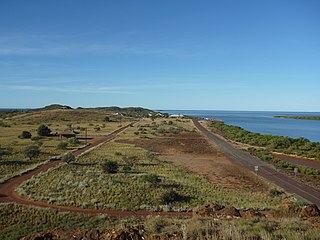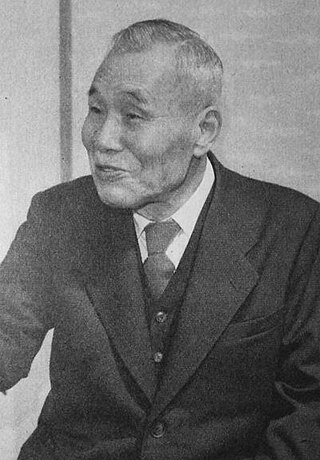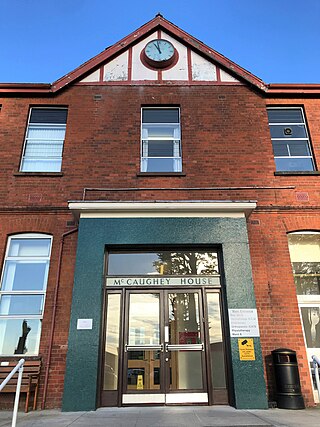
The Waverly Hills Sanatorium is a former sanatorium located in the Waverly Hills neighborhood of Louisville, Kentucky.
Wooroloo Prison Farm is an Australian minimum-security prison located in Wooroloo, Western Australia. It was established in 1972 under an arrangement that it would offer some of its amenities to the community of Wooroloo. It was previously the site of a sanatorium.

Westwood is a town in the Rockhampton Region and a locality split between the Rockhampton Region and the Shire of Banana in Queensland, Australia. It was the first town that was gazetted by the Queensland Government. In the 2021 census, the locality of Westwood had a population of 199 people.

The Eastern Railway is the main railway route between Fremantle and Northam in Western Australia. It opened in stages between 1881 and 1893. The line continues east to Kalgoorlie as the Eastern Goldfields Railway.

The Railway Reserves Heritage Trail – also on some maps as Rail Reserve Heritage Trail or Rail Reserves Historical Trail, and frequently referred to locally as the Bridle Trail or Bridle Track – is within the Shire of Mundaring in Western Australia.

Glen Forrest is a suburb within the Shire of Mundaring, south of John Forrest National Park, west of Mahogany Creek, east of Darlington, and north of the Helena River. Its northern boundary is determined by the Great Eastern Highway.

Cossack, known as Bajinhurrba in Ngarluma language, and formerly known as Tien Tsin, is an historic ghost town located 1,480 km (920 mi) north of Perth and 15 km (9.3 mi) from Roebourne in the Pilbara region of Western Australia. The nearest town to Cossack, which is located on Butcher Inlet at the mouth of the Harding River, is Wickham. The former Tien Tsin Harbour is now known as Port Walcott. Since 2021, the townsite is managed and operated by the Ngarluma and Yindjibarndi Foundation Ltd (NYFL).
Wooroloo is a town on the outer fringe of the Perth metropolitan region, located off Great Eastern Highway in the eastern part of the Shire of Mundaring. At the 2021 census, Wooroloo had a population of 2,613.
Bailup is a Western Australian locality and rural residential estate located 62 kilometres (39 mi) northeast of the state capital, Perth, along Toodyay Road. The population recorded at the 2021 census was 54. The area is split between the Shire of Toodyay and Shire of Mundaring, the latter of which contains most of the Bailup area.

The Shire of Mundaring is a local government area in eastern metropolitan Perth, the capital of Western Australia. The Shire covers an area of 645 square kilometres (249 sq mi) and had a population of approximately 38,000 as at the 2016 Census.

Kensuke Mitsuda was a Japanese leprologist and director of the Tama Zenshoen Sanatorium (1914–1931) and the National Sanatorium Nagashima Aiseien (1931–1957). He had been at the frontier of leprosy policy of Japan. He was given the Order of Cultural Merits (1951) and Damien-Dutton Award (1961). He has been the cause of admiration from one side, and the target of criticism from the other.

William Burden Hardwick, often referred to professionally as W.B. Hardwick, was an Australian architect who from 1917 until 1927 was Principal Architect of the Public Works Department in Western Australia. The Encyclopedia of Australian Architecture refers to Hardwick as being "well known for continuing the high standards of design in public buildings established during the gold boom, particularly in hospitals, schools and post offices throughout the state".
The town of Colorado Springs, Colorado, played an important role in the history of tuberculosis in the era before antituberculosis drugs and vaccines. Tuberculosis management before this era was difficult and often of limited effect. In the 19th century, a movement for tuberculosis treatment in hospital-like facilities called sanatoriums became prominent, especially in Europe and North America. Thus people sought tuberculosis treatment in Colorado Springs because of its dry climate and fresh mountain air. Some people stayed in boarding houses, while others sought the hospital-like facilities of sanatoriums. In the 1880s and 1890s, it is estimated that one-third of the people living in Colorado Springs had tuberculosis. The number of sanatoriums and hospitals increased into the twentieth century. During World War II, medicines were developed that successfully treated tuberculosis and by the late 1940s specialized tuberculosis treatment facilities were no longer needed.

Ethan Allen School for Boys was a reform school in Delafield Town, Wisconsin which operated in a former tuberculosis sanitorium from April 1959 until June 2011, when it was abolished and the inmates moved to Lincoln Hills School in Irma. It was operated by the Wisconsin Department of Corrections.

The Parkerville Children's Home Bush Cemetery was part of the Parkerville Children's Home . The Home was founded in 1903 by Anglican nuns led by Sister Kate. Parkerville Children's Home is located in Parkerville, Western Australia, and continues to operate.

Mundaring Cemetery is located at the intersection of Yarri Grove and Railway Terrace, Mundaring, Western Australia.

Whiteabbey Hospital is a hospital located close to the village of Whiteabbey, within the town of Newtownabbey, Northern Ireland. The hospital first opened in 1907 as The Abbey Sanitorium, centred around a country house known as 'The Abbey'. The house has stood on the site from 1850, and was once the residence of prominent architect Charles Lanyon. The hospital was extended and several buildings added throughout the early 20th century, and it was renamed Whiteabbey Hospital in 1947. The hospital is managed by the Northern Health and Social Care Trust. Many healthcare services have been withdrawn from the hospital, most recently with the closure of the Minor Injuries Unit in 2014.
The 2021 Beechina bushfire was a bushfire that began on 26 December 2021 in Beechina, 46 kilometres east-north-east of the Perth central business district, in the Shire of Mundaring, Western Australia. The bushfire began less than five kilometres from the 2021 Wooroloo bushfire, and coincided with a COVID-19 outbreak and associated public health measures in the Perth metropolitan region. One house was destroyed as a result of the fire, along with six outbuildings and a number of vehicles.














